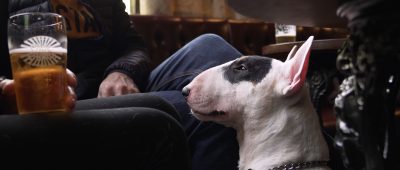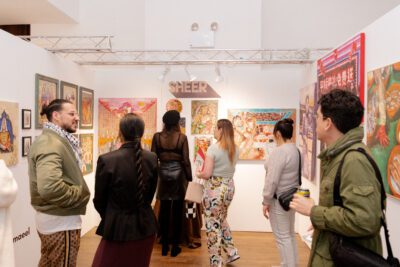Kehinde Wiley: A New Republic Reigns at the Brooklyn Museum
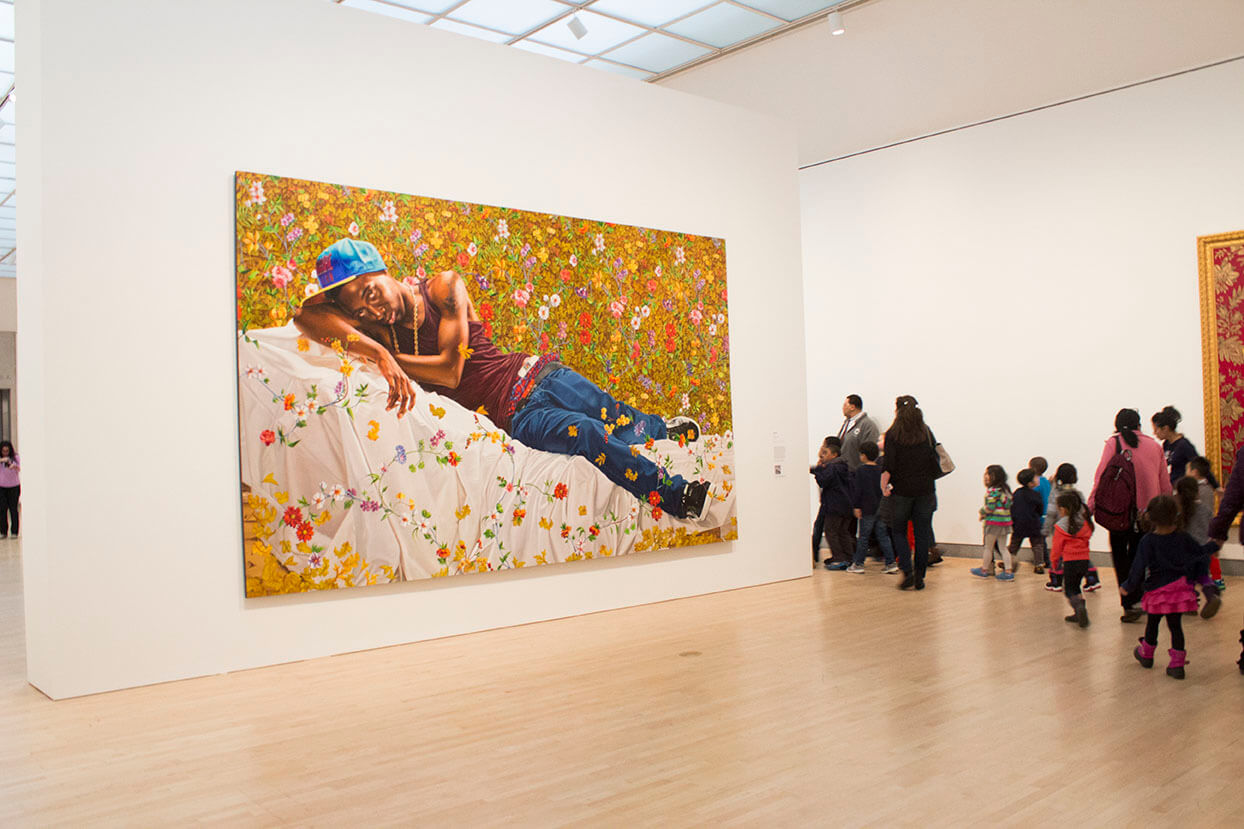
(Photos by Nicole Disser)
A new retrospective at the Brooklyn Museum is testament to the last 15 years of the artist Kehinde Wiley‘s career as mostly a painter of young black men. But A New Republic goes beyond just the pieces that have come to define Wiley’s body of work consisting mainly of massive, colorful pantings inspired by classical art as much as they turn these familiar influences on their heads.
In the past decade or so, Wiley added bronze casting to his repertoire and has produced more of what we’ve come to expect from the mid-career artists: busts made using traditional art techniques that rather than further lionize the usual (white) suspects–Beethoven, Pushkin, Aristotle, Thomas Jefferson—instead glorify young black men. These subjects, or rather glorified persons, are deemed worthy by Wiley of a bust in their likeness, something that’s symbolic of immortality, which obviously only the most influential, brilliant, or powerful people have historically have been allowed to achieve in some sense.
These busts, along with Wiley’s paintings, recall classical techniques, poses, and even particular famous works of art, call attention to the tension between old and new. There’s something ironic about his devotion to classical art–Wiley updates its tired tropes in a manner that honors them while challenging and rejecting them. It reveals his complicated relationship with classical art forms, things that he clearly reveres.
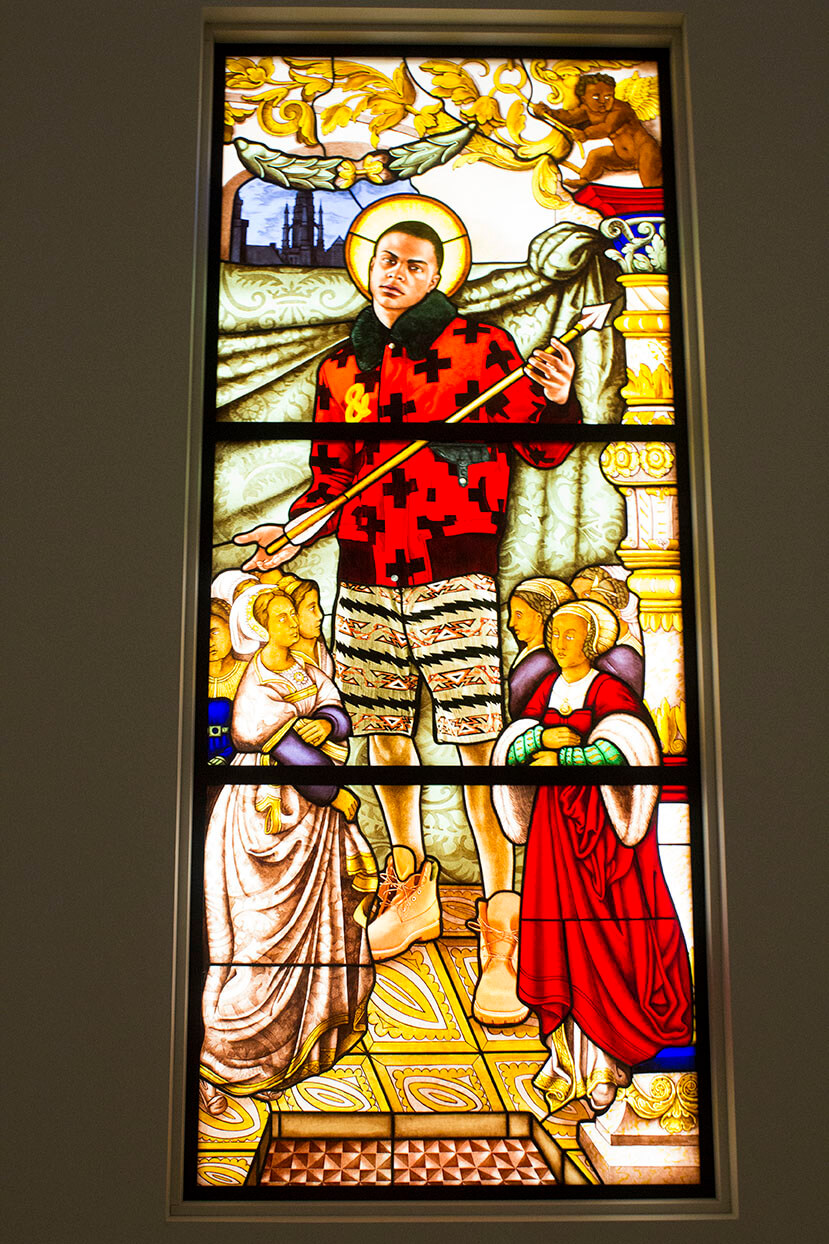

How can you love and revere something that has traditionally excluded you? How do you deal with that? Well, you tear things down and start anew. But using the same old techniques might seem like a betrayal of any renewal project. So Wiley doesn’t just replace white men with black men, the oppressor with the oppressed and thereby empowering the latter. He also makes work that is thoroughly modern—it’s ironic, colorful and stimulating. Wiley’s bright colors and swirling almost psychedelic patterns activate excitement in the viewer, these are not paintings like so many classical art works, that dull the senses. They don’t lull you into some passive, blank stare because you’re not looking at images that have essentially become clichés.
That’s why, when I walked into the fourth floor room containing Wiley’s best known paintings, my jaw dropped; I was totally overtaken by the 30-foot-long Morpheus, just one work in an expansive series (Down) of paintings inspired by Holbein’s The Body of the Dead Christ in the Tomb. The painting, which takes up the entirety of a massive wall dividing the room, inspired the same or similar reactions in other visitors. Babies cried out, people whipped out their iPhones, and a few kids visiting on a field trip cried out “Wow.”
The exhibition also includes Wiley’s stained glass window series featuring likenesses of various young men he invited into his studio from off the street, then photographed, before they ended up embalmed in colorful glass. Again, this isn’t the stain glass you’re used to seeing in cathedrals throughout Western Europe, nah, this is something else. The jewel-toned colors are rich, the edges precise, and of course the people depicted are far from saints–they are relaxed, stylish, bold looking, youthful rather than pious, wise, and either stiff or prone. They aren’t wearing humble sexless robes, but trendy threads. One woman remarked, “I just love his outfit.” Well, yeah, they look great. But the important thing is no one would be caught dead saying that about classical glass saints. And differences, Wiley’s figures are still ethereal and glowing.
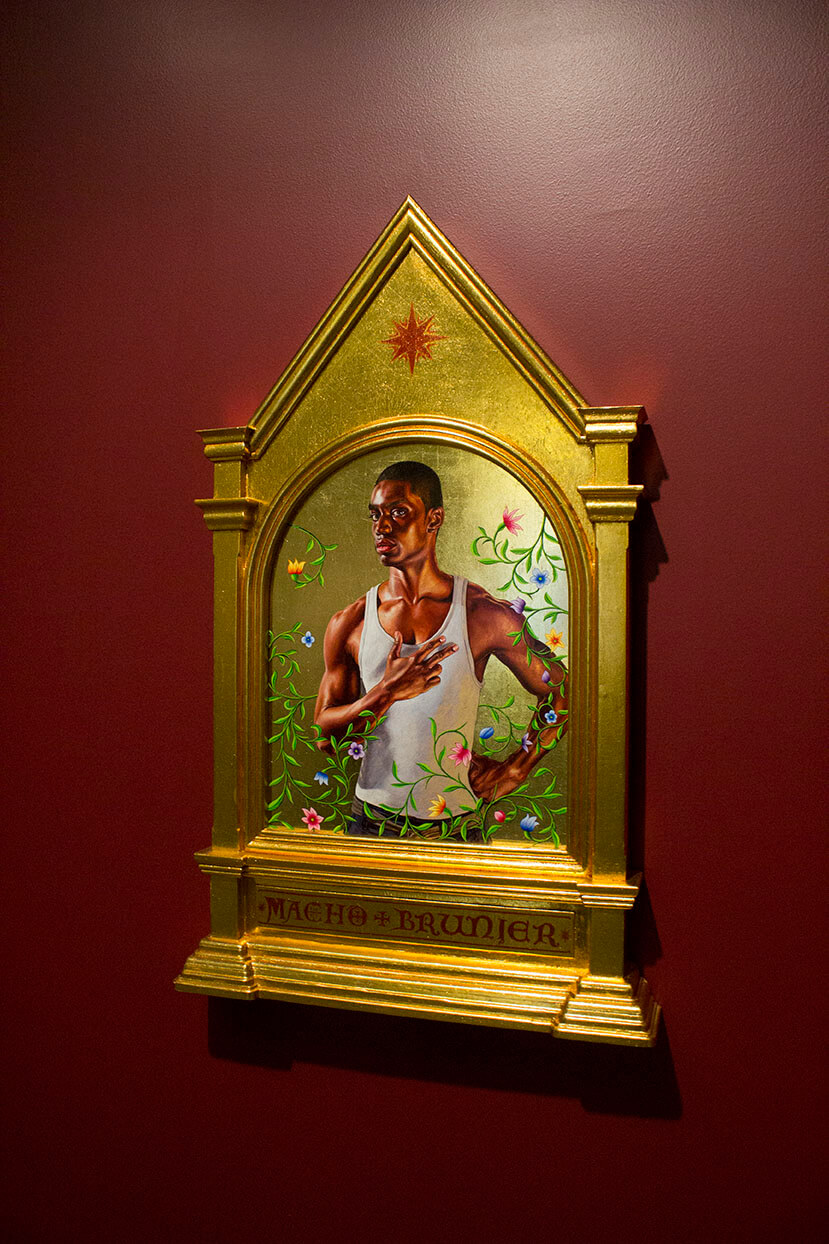

But probably the most striking element of the exhibition are Wiley’s paintings of women. He’d actually never painted women prior to his series, An Economy of Grace. The results are equally as technically well executed and beautiful as his paintings of black men, but it’s kind of a wonder if took him this long. If Wiley’s artistic mission was to upend the cannon and disrupt, challenge, and dismantle white supremacy in the Western art milieu, it seems like a major focus would be black women, who are equally as under, or not at all represented. It becomes clear that Wiley’s concern was only recently about challenging patriarchy. But better late than never.
With this in mind, it’s not surprising the Brooklyn Museum relegated Wiley’s paintings of women to a room of their own. It marks a distinct period in his artistic career, and if this is a retrospective then organizing works by either medium or point in career trajectory makes sense. Though many of Wiley’s paintings challenge traditional white standards of beauty, they don’t challenge women’s place in art works as his paintings of men do. His depictions of women all wear expressions of determination, pride, and confidence for sure, but save for Judith and Holofernes (which is a play on Judith With the Head of Holofernes by Cristofano Allori, but instead of Judith holding the Assyrian general’s severed head, Judith holds a white woman’s head), these women are not very powerful looking. There are no women on horses, riding into battle. No women with swords or other weapons. They are still nothing more than beautiful objects in most of Wiley’s paintings, which is disappointing given his radical confrontation with the art world’s obsession with whiteness.
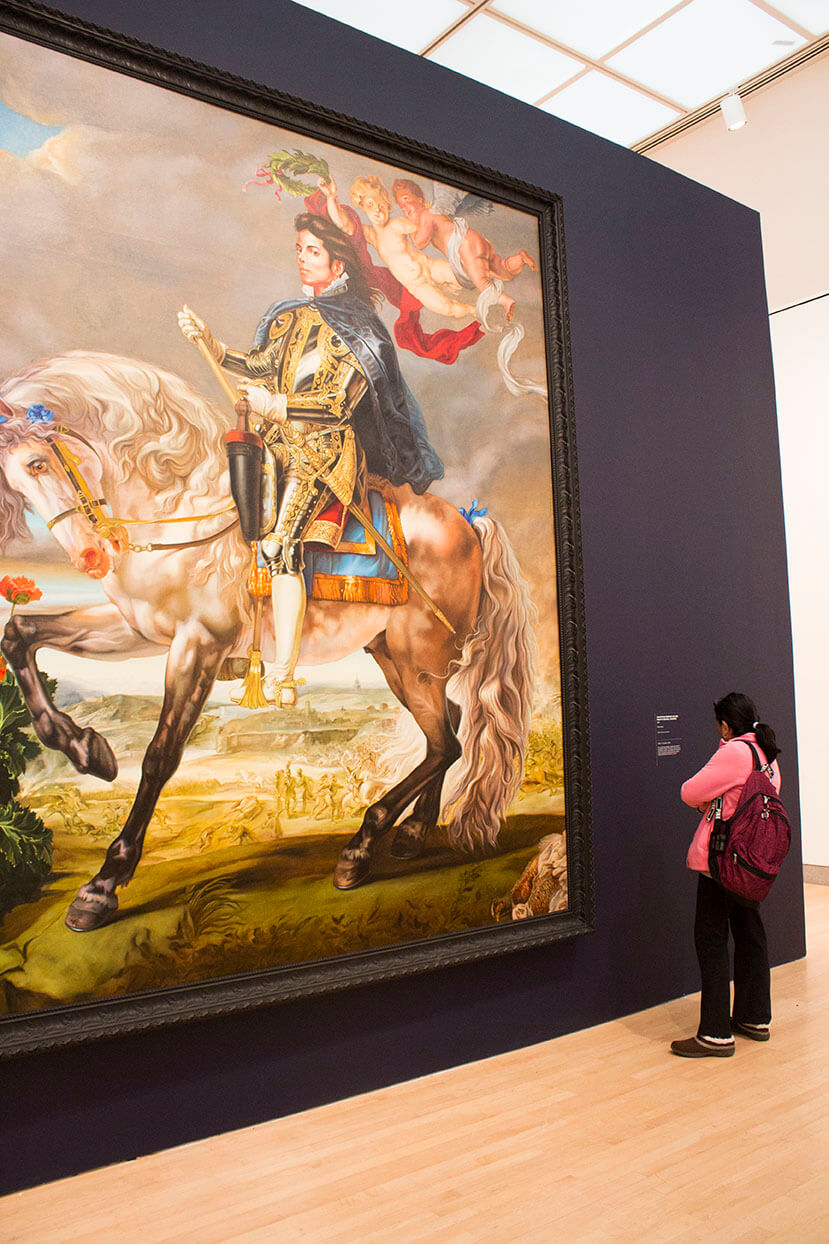

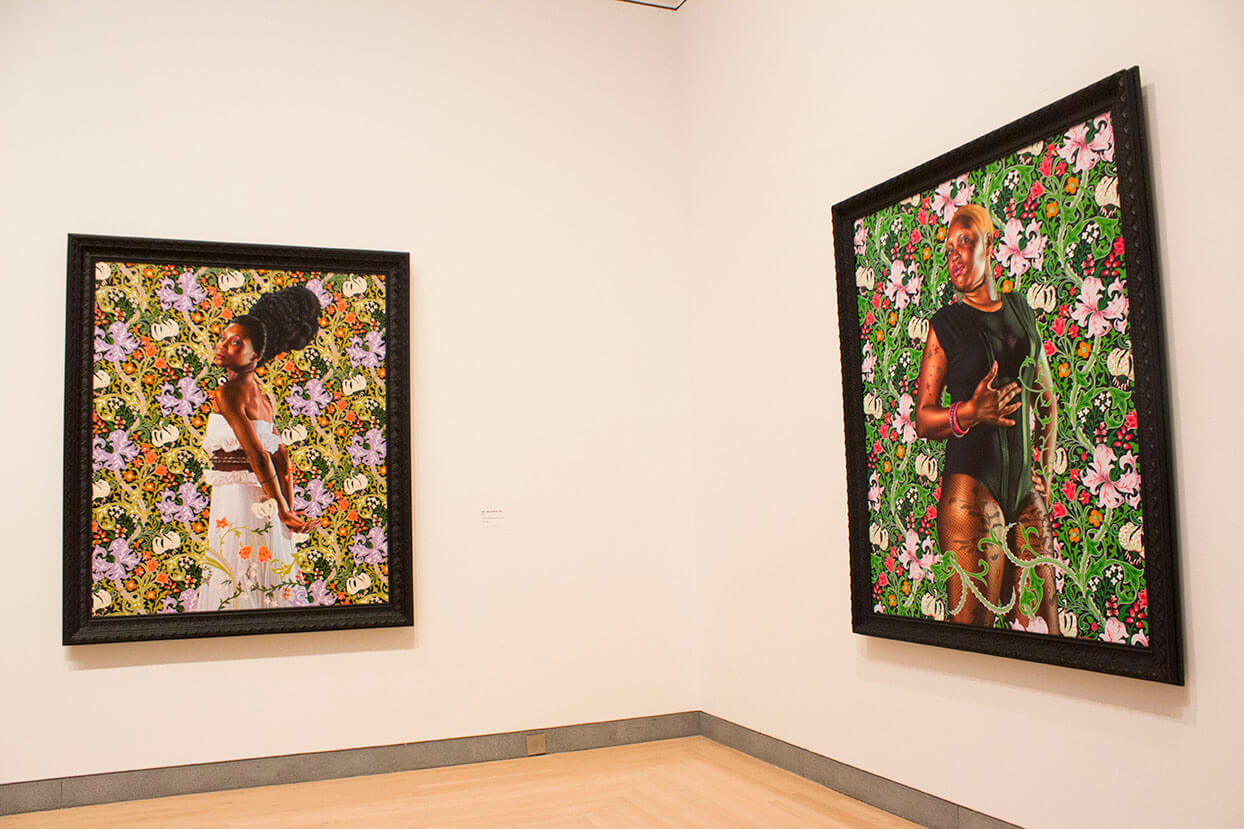

Kehinde Wiley’s A New Republic is on view at the Brooklyn Museum from now until May 24th 2015.
You might also like 














